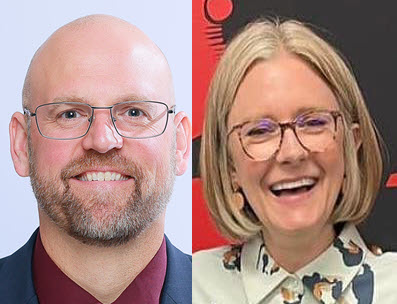Abstract
Excerpted From: Nicholas Schroeck and Carrie Leach, The Exacerbating Role of Technological and Connectivity Challenges on Older Detroiters' Health in a Pandemic, 13 Seattle Journal of Technology, Environmental & Innovation Law 1 (May, 2023) (113 Footnotes) (Full Document)
 The COVID-19 pandemic hit communities of color hard. The City of Detroit was particularly vulnerable to COVID-19 due to racial, socioeconomic, and environmental health factors.
The COVID-19 pandemic hit communities of color hard. The City of Detroit was particularly vulnerable to COVID-19 due to racial, socioeconomic, and environmental health factors.
For older adults in Detroit, these factors were exacerbated by the added impact of technological barriers that existed before and during the pandemic. Indeed, research has shown that the digital divide amplified health outcome disparities and that Detroit is behind the curve in the transition to telehealth and telemedicine.
Telemedicine is defined by the National Institutes of Health as using technology to provide and support healthcare from a distance. This technology can provide patients with access to timely, quality, and affordable medical aid services without leaving their homes. Due to the dearth of primary care providers and the difficulty of accessing medical services under normal circumstances in Detroit, improved telemedicine is a good solution for older adults to receive medical checkups, assess their health status, and receive a diagnosis and treatment without risking exposure to COVID-19. Older adults in general are more likely to experience barriers to telehealth and older Detroit residents face additional racial and socioeconomic obstacles in obtaining internet access, web-enabled devices, and age-appropriate training.
The City of Detroit has three unique characteristics that make it a critical location for bolstering digital inclusion: (1) Detroit's older African-American population experiences a higher rate of mortality and morbidity than older residents in the rest of Michigan; (2) more than 50% of older African-Americans in Detroit live in a federally designated medically underserved area; and (3) Detroit has one of the lowest internet connectivity rates in the United States.
To analyze the exacerbating role of technology and connectivity challenges on older Detroiters' health in a pandemic, we first examined Detroit's demographics. This analysis involved looking at the continued evolution of the City's population toward older adults, as well as the impact of COVID-19 and the healthcare services on Detroit's elder population.
Next, we examined Detroit's internet access challenges, including the presence of digital exclusion among older adults in Detroit, the impact of COVID-19 on digital inclusivity, the requirements for telehealth services and how they limit access to older adults, COVID-19 funding for telehealth services and internet connectivity, and finally the impact of access to devices and digital literacy in Detroit.
Finally, we addressed how Detroit, the State of Michigan, and the Federal Government can bridge the digital gap. This recommendation included examining the current steps taken by The Center for Urban Responses to Environmental Stressors (CURES), and what programs are needed next, including follow-up, connecting with community partners, the potential benefits of funding announcements by federal and state programs aimed at addressing connectivity gaps, and community-based connectivity solutions and their real-world impact.
[. . .]
Telehealth systems have extended the provision of health services and information to older adults across the country. In cities like Detroit, however, many elders have not had access to telehealth's benefits. Inadequate network infrastructure has prevented many low-income elders from accessing these services. However, infrastructure improvements and access to devices and training can assist seniors in acquiring affordable healthcare services in the future. Given the excessive and chronic health and environmental burdens, and myriad reasons that older African-American Detroit residents are disconnected from their social networks and health care, the need for investment in their digital literacy capacity is crucial. Developing a digital literacy strategy created with and for older Detroit residents will improve the relevance and uptake and lead to improved health outcomes.
Nicholas J. Schroeck, Associate Professor of Law and Associate Dean of Experiential Education at University of Detroit Mercy School of Law.
Dr. Carrie Leach, Research Assistant Professor, Institute of Gerontology and Community Engagement Core Leader, Center for Urban Responses to Environmental Stressor at Wayne State University.


